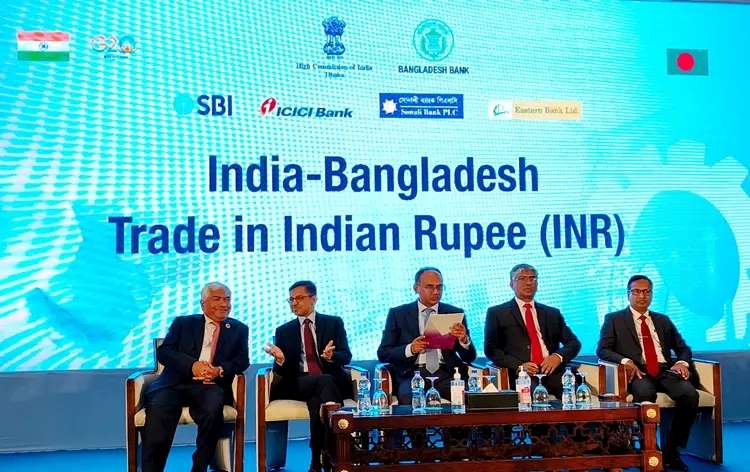
While India and Bangladesh launched rupee-based trade in June 2023 to reduce dependence on the US dollar, the initiative faces an uphill battle. With a turnover of just $0.46 million in nearly seven months, the program suffers from several challenges.
Current challenges
Dollar dominance: The global dominance of the US dollar for international trade settlements remains a major obstacle. Businesses are accustomed to dollar-denominated transactions, making them wary of the complexities and uncertainties associated with a new system.
LC complexities: The process of issuing and managing Letter of Credit (LC) for rupee-based transactions is still being established, leading to delays and complexities for businesses.
Exchange rate volatility: Fluctuations in the exchange rate between the rupee and taka introduce an element of risk for both exporters and importers, deterring them from adopting the new system. These factors, along with businesses' reluctance to embrace the new system due to initial hiccups with LCs, have contributed to the slow uptake.
Can rupee trade boost textile and apparel business?
Despite the current challenges, stakeholders believe in the initiative's potential, particularly for the crucial textile and apparel sector in both countries. However, India's perspective differs.
Bangladesh's dollar dilemma: Bangladesh struggles with dollar scarcity, making exploring alternatives like the rupee attractive from an import cost perspective. This could potentially lead to increased imports of raw materials like fibers, yarns, fabrics, and chemicals from India.
India's focus on raw material exports: For India, this initiative might hold greater significance for raw material exports to Bangladesh, which is more valuable than finished textile imports. It is important to note that India's primary interest in the rupee trade initiative lies in expanding its exports of raw materials like fibers, yarns, fabrics, and chemicals to Bangladesh. By settling payments in rupees, India can lessen its reliance on the US dollar, which is crucial for managing its foreign exchange reserves. Facilitating trade in local currencies can strengthen economic ties between India and Bangladesh, fostering a more integrated regional market.
Success can be achieved through reduced transaction costs to begin with. Eliminating the need for currency conversion can lead to cost savings for businesses, making them more competitive. Also, faster trade settlement as Rupee-based transactions can potentially streamline the settlement process compared to dollar-based transactions, leading to quicker access to funds.
The bottomline is despite the current challenges, stakeholders remain optimistic about the initiative's potential. Addressing operational hurdles, such as simplifying LC procedures and mitigating exchange rate volatility, is crucial for broader adoption. Additionally, exploring the possibility of using Bangladeshi Taka in bilateral trade, alongside the rupee, could help address the trade imbalance between the two nations. This initiative, while facing initial hurdles, holds promise for fostering regional economic integration and potentially benefiting the textile and apparel sector in the long run. However, overcoming existing challenges and exploring further development opportunities will be critical for its success.












